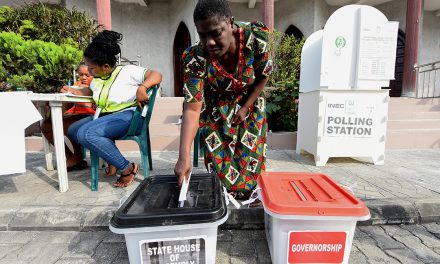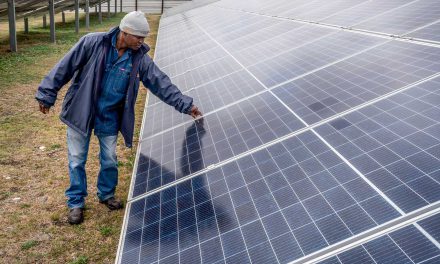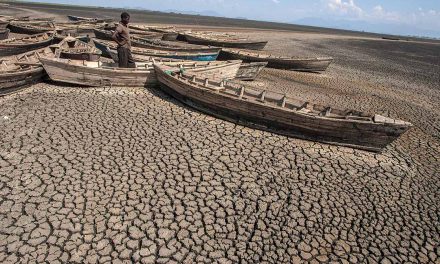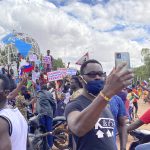
People extinguish fire on cars caused by a bomb explosion near Parliament building in Kampala, Uganda, on November 16, 2021. Photo: Ivan Kabuye/AFP
On 16 November, three suicide bombers detonated improvised explosive devices (IEDs) in Kampala, Uganda. The first occurred opposite the central police station. Two more occurred a few minutes later at government buildings on Parliament Avenue. Three civilians died in the attacks. Another 33 people have been hospitalised.
The Islamic State (IS) has claimed responsibility via the group’s semi-official Amaq news agency, but the operation was likely carried out by a Ugandan cell of the ISIS-affiliated Allied Democratic Forces (ADF), a non-state armed group which has historically operated in the eastern Democratic Republic of Congo and Rwenzori borderlands region between Uganda and the DRC.
This week’s events follow three incidents last month involving IEDs where ADF involvement is suspected. On 23 October, an IED was detonated at a restaurant in the Kampala suburb of Kamamboga, killing one civilian. On 25 October, a suicide bomber detonated an explosive vest on a bus travelling through Mpigi district in the central region of Uganda, killing himself and injuring several passengers. And on 30 October, an IED killed two children in a village in Nkaseke district, 60km north of the capital. Also noteworthy, on 1 October, Rwandan authorities arrested 13 suspected ADF members for allegedly planning to bomb civilian targets in Kigali.
The ADF has historically operated in the eastern Democratic Republic of Congo and Rwenzori borderlands region between Uganda and the DRC. The incidents outlined above indicate that the ADF has multiple cells in the region and the ability to activate these cells to carry out attacks. The utilisation of IEDs is in line with an upward trend in their use which began around two years ago with substantial effect. Most significantly, perhaps, the use of suicide bombing as a tactic and a clandestine cell system as a method of organisation, illustrates the evolution of the group into one with wider ideological aims aligned to the IS. This raises the potential for transnational collaboration with other IS affiliates and pro-IS groups dotted across the continent and the risk of further terrorist attacks both in Uganda and other states in the Great Lakes region.
Reducing the terrorism risk posed by increasingly regionalised and networked armed groups like the ADF will require increased security cooperation between states and a clear regional strategy, with military, law enforcement, and developmental components. This will be difficult given that relationships between many states in the Great Lakes region are characterised by mistrust, and there have been several cases of state-sponsored support for non-state armed groups for domestic political or economic gain. The ADF itself received early support from Former Democratic Republic of Congo (DRC) President Mobutu Sese Seko in his proxy war against President Museveni in the 1990s.
Who are the Allied Democratic Forces?
Despite being operational for over two decades, the ADF is poorly understood. The group formed in the late 1990’s between portions of Uganda’s Tabliq Islamic sect and the National Army for the Liberation of Uganda (NALU) to fight the Ugandan government of President Yoweri Museveni.
While the ADF has historically contained salafi-jihadist elements, they have been adept at exploiting ethnic and social tensions to embed themselves in local communities along the border region of eastern DRC.
Building a strong regional security strategy requires trust and collaboration between states. However, in the Lake Chad region, many of the relationships between states are characterised by mistrust, and there have been several cases of state-sponsored support for non-state armed groups for domestic political or economic gain. The ADF itself received early support from Former Democratic Republic of Congo (DRC) President Mobutu Sese Seko in his proxy war against President Museveni in the 1990s.
The mountainous terrain where the ADF’s strongholds and training camps are located makes engaging the group militarily difficult. The region allows the ADF access to cross-border trade and the ability to exploit longstanding inter-community tensions in both Eastern DRC and Uganda. The lack of government authority in the eastern DRC has seen the group engaging in forms of rebel governance, establishing prisons, schools, and providing rudimentary healthcare for local communities to entrench themselves in the area.
There are roughly 120 armed groups operating in eastern DRC. The ADF is one, if not the most violent and responsible for hundreds of mass killings, rapes, kidnappings, looting, extortion, and use of child soldiers. Estimates suggest the group has killed 6,000 civilians since 2013. They also regularly attack hard targets, including both government security forces and United Nations (UN) peacekeepers.
For much of the ADF’s existence, the group did not communicate a wider political or ideological agenda besides removing President Museveni from power – to the point where they earned the moniker of ‘rebellion without a cause’. However, in recent years, its leadership began to openly espouse a jihadist discourse and align with the Islamic State.
Research by the UN Group of Experts on the DRC, Congo Research Group, and George Washington University Programme on Extremism, all indicate the ADF likely opened communication channels with the Islamic State in 2017/2018:
- In 2018, the Central African Province (ISCAP) was formally recognised by the Islamic State, with non-contiguous territory in eastern DRC and northern Mozambique.
- In April 2019, the Islamic State first began to publicly claim responsibility for ADF attacks.
- In June 2019, ADF leader Musa Baluka pledged formal allegiance (bay`a) to Abu Bakr al-Baghdadi, former caliph of the Islamic State.
- In September 2020, Baluka publicly stated that the ADF is now “one of the numerous provinces which make up the Islamic State”. However, it is unclear whether Baluka represents the ADF as a whole or a specific faction.
- In March 2021, the US Department of State designated the “the Islamic State of Iraq and Syria – Democratic Republic of the Congo (ISIS-DRC)” a Foreign Terrorist Organization under section 219 of the Immigration and Nationality Act and its leader, Musa Baluku, a Specially Designated Global Terrorist (SDGTs) under Executive Order 13224.
It remains difficult to determine the nature of the relationship between the ADF and the Islamic State. It is likely a mutually beneficial one whereby the ADF is able to raise its profile, while the Islamic State is able to continue its global project in line with their motto of “baqiya wa tatamadad” (‘lasting and expanding’). Regardless, the ADF is attempting to implement the Islamic State’s aqeeda (creed) and manhaj (method), and by adopting IS-aligned propaganda, has been able to attract a new wave of recruits from Burundi, Rwanda, Tanzania, and Uganda.
A better understanding of the relationship between the ADF and the Islamic State is critical. Why? Studies show the Islamic State was able to strengthen and shape the tactics of the Boko Haram faction that became the Islamic State West Africa Province (ISWAP) by providing a limited amount of training, resources, and instruction, transforming the group into the deadliest in the Lake Chad region. This has caused untold hardship in the region and severely undermined the ‘One Nigeria’ project. Understanding the relationship between the ADF and Islamic State networks will inform more nuanced counter-terrorism strategies and which tools from law enforcement, state security, border management, conflict management and mediation are most important for this purpose.
Historical efforts to combat the ADF
To date, efforts to combat the ADF have been unsuccessful. In March 2013, the UN nations approved the creation of its first-ever “offensive” combat force intended to carry out targeted operations to “neutralise and disarm” Congolese M23 rebels and other armed groups in the eastern DRC. After initial successes against M23, the Force Intervention Brigade (FIB) staffed by the Southern African Development Community (SADC) and attached the UN peacekeeping force (MONUSCO), was tasked with implementing its offensive mandate against the ADF and other non-state armed groups in the region.
On 17 December 2017, an ADF attack against a MONUSCO base in Beni Territory, North Kivu region of the DRC saw 15 Tanzanian peacekeepers killed and another 53 UN personnel wounded, making it the deadliest incident against any UN peacekeeping force to date. In a November 2018 operation against the group in Beni, 9 UN peacekeepers were killed and another 10 wounded.
The FIB has been plagued by operational, political, and financial challenges. However, given the deeply embedded nature of the ADF in the eastern DRC, an outright military defeat is highly unlikely. Moreover, the ADF’s strategy of carrying out brutal mass reprisals against civilians in response to FARDC and FIB offensives complicates matters by counteracting MONUSCO’s peacekeeping mandate.
In response to the increasing frequency of ADF attacks in the eastern DRC, on 02 May 2021, President Felix Tshisekedi announced a ‘state of siege’ on 02 May in North Kivu and Ituri, placing the provinces under military administration. In August, President Tshisekedi authorised a United States (US) special forces deployment to the DRC to help the Congolese army fight the ADF.
While these efforts have dampened ADF activity in the eastern DRC, subsequent increased ADF activity in Uganda illustrates the group’s adaptive capacity and regional challenge it poses.
Uganda’s response to recent ADF activity
Following ADF attacks in October, Uganda’s Joint Anti-Terrorist Task Force (JATF) led a security crackdown against the group.
- On 27 October, 3 people were arrested suspected of funding ADF operations through petroleum and real estate businesses.
- On 01 November, the police announced the arrest of 48 people in connection with the October bombings.
- On 04 November, police announced the arrest of several suspects and recovery of a suicide belt, explosives, and an AK-47 rifle in Kampala. One of the suspects was shot dead by police while trying to escape.
This week’s suicide bombings has seen the deployment of additional law enforcement and military personnel to the capital; enhanced security at police stations and other government buildings; increased foot and vehicle patrols; and stop-and-search operations. These may help deter terrorist activity in the capital in the short term. However, dragnet arrests and security crackdowns, particularly on Muslim communities, as seen in Kenya’s Usalama Watch (“protect the nation”), have also produced negative outcomes and worsened the state’s relationship with the communities which it should be seeking to gain as allies.
Stephen Buchanan-Clarke is a security analyst with several years' experience working in both conflict and post-conflict settings in Africa, primarily on issues of peace and security; transitional justice and reconciliation; democratisation and governance; and preventing and countering violent extremism. He currently serves as head of the Human Security and Climate Change (HSCC) project at Good Governance Africa and is a co-editor of the Extremisms in Africa anthology series.











